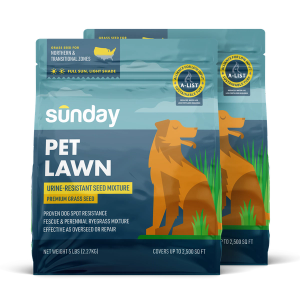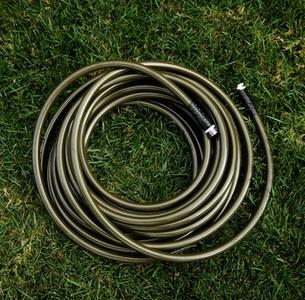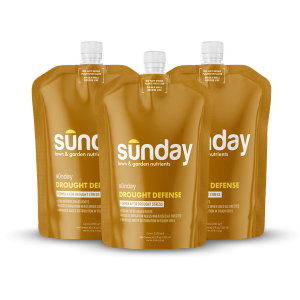Why it's important to mow your lawn
We mow because consistency in grass growth is crucial in maintaining a beautiful yard—and what homeowner doesn’t want that? Mowing also helps keep your lawn healthy and, at the same time, eliminates some of the pests from the grass.
The first cut of your lawn’s growing season may also be the most important. It sends a signal to lawn roots that it’s time to get growing and removes dead grass tips that took the brunt of winter. Once the weather warms around March and April, the grass in your yard gets busy growing fast especially if the soil is getting the nutrients it needs.
Mowing dos
Sharpen your mower blade
Dull blades tear at grass, making it look frayed and messy and causing undue stress. What’s more, torn and shredded grass from dull mower blades are vulnerable to disease. Watch our blade sharpening step by step to see how to do it yourself!
Mow only when your grass is dry
Wet grass can clog your mower deck and lead to an uneven cut. No one wants that. Besides, walking all over wet grass can just get sloppy.
Mow high
Short grass is stressed grass. Mow down to about 3–3 ½ inches. Don’t want to measure? Set your mower to the highest setting. Check out our mowing height chart for height suggestions based on your grass type.
Mow often
Mow regularly and only take a third of the grass blade off at a time. Cutting off large portions of grass at a time weakens and stresses your grass blades.
Grasscycle
Yep, that’s a verb. “Grasscycling” is when you leave grass clippings right where they fall when you mow your lawn. No need to bag and trash those clippings because they give your grass the nutrients it needs as they decompose. This little trick only works well when you cut only a third of the grass blade at any given time.
Adjust to the season
It’s okay—and is often encouraged if the temps are hot and dry—to let your lawn’s grass grow longer in the summer; it’ll help with heat stress and prevent weeds from growing. Taller grass also leads to longer roots, and that’ll slow soil water evaporation. Great news if you’re in a dry climate since your lawn will be able to withstand drought better.
Sunday Tip:
Mow before applying Sunday products. This method helps remove unneeded leaf tissue off of the lawn so nutrients can move past the grass canopy to be absorbed into the soil and by the plant. So, by mowing before you apply your Sunday nutrient pouches, you’re effectively getting the most bang for your buck AND helping your lawn absorb as much Sunday nutrients as possible.
Mowing don'ts
Don’t cut your lawn too short
A good rule of thumb is removing no more than ⅓ of the grass length each time you mow. When your lawn is cut too short, it’s more susceptible to disease and weeds. If cut too short, it can also get seriously damaged in drier, hotter climates where droughts are more frequent.
Don’t mow your lawn every week
We get it; it’s easy to think you’ve got to mow every week, but that can overlook the subtleties of what your lawn needs and ignore factors like sunlight, water and growth rate which is influenced by your soil’s health and time of year. Even the type of grass you have impacts how often you should be mowing it.
Don’t mow during peak hours of the day
The smell of freshly cut grass is actually its stress call (we’re not even kidding). If you mow during peak hours when the sun is strongest (10 a.m. to 2 p.m.), your grass will lose more water and won’t recover as quickly, compared to mowing earlier in the morning or in the early evenings.
Don’t mow right after seeding
To get the best results, it’s better to wait to mow after you spread grass seed on your lawn and when the blades are about 2 inches tall.
Don't mow stressed grass
When your region is experiencing extreme temperatures and periods of drought, avoid mowing to limit further damage to your lawn.
Sunday Tip:
Don’t mow right after applying Sunday nutrients. This will remove some of the application from the leaves (and your lawn!), especially if harvesting clippings
Fun Fact: The first mechanical lawn mower was invented in 1830 by Edwin Beard Budding.
Mowing has been a part of land ownership for centuries. Before we had electric mowers, we relied on sheep or scythes to keep grass trimmed. More than being a way to manicure our little treasures of land, mowing is good for the health of the grass and, below that, the soil.



















